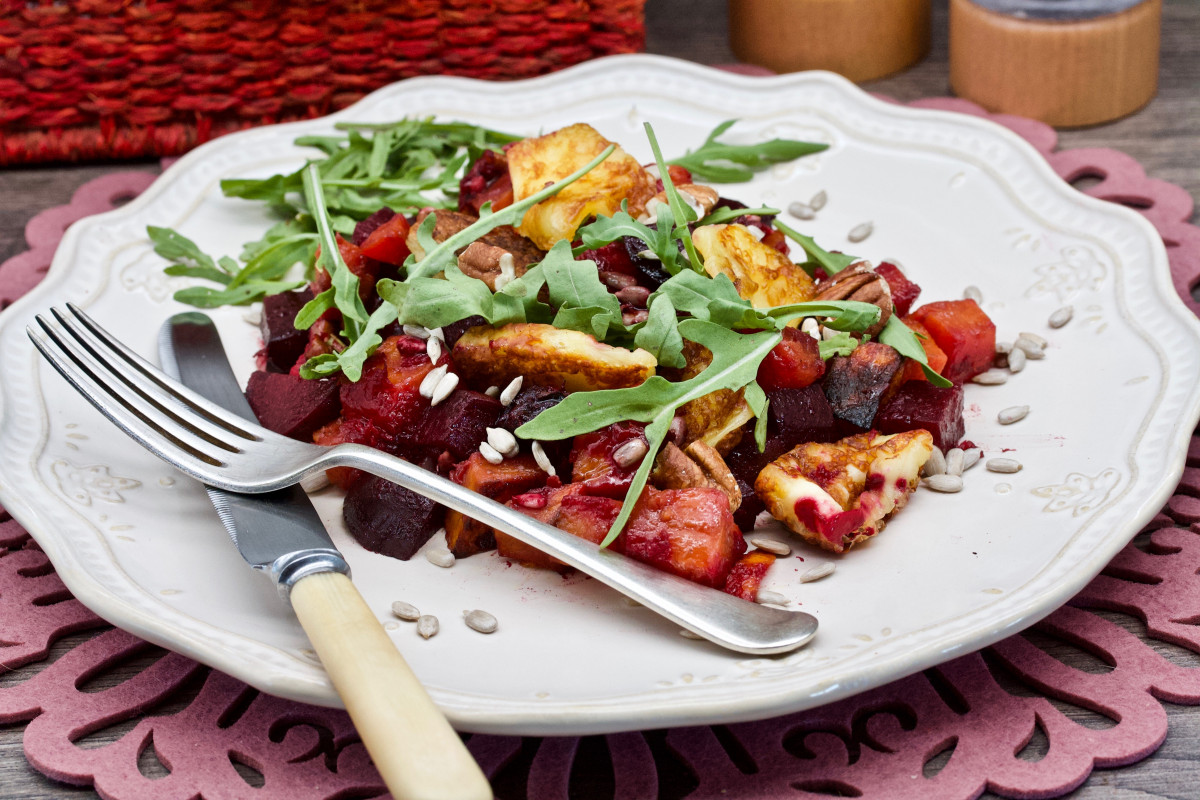Those bunches of beetroot lying at the supermarket look rather intimidating. Rough, ungroomed and hard to deal with in fact! But once you pluck up the courage to master the beetroot you will find that it is a wonderful addition to a healthy diet.
First of all, the beetroot adds wonderful colour to salads or to a medley of roast veggies. It pairs particularly well with butternut. So yes, once he has been groomed and gotten under control, the beetroot is a welcome guest at dinner.
But let’s take a more serious look at the often-ignored beetroot. It is a powerhouse of fibre and nutrients, at a very low calorie cost. Here is a breakdown:
- Folate (vitamin B9). One of the B vitamins, folate is important for normal tissue growth and cell function
- Manganese, an essential trace element that is necessary for many chemical processes in the body
- Potassium, an electrolyte that maintains normal fluid levels within cells
- Iron, an essential mineral, found in red blood cells necessary for the transport of oxygen in your body
- Vitamin C, an antioxidant that is important for immune function and also helps your body absorb iron
The fact that it is high in fibre is good for our gut health. Check out this link to see how important a healthy digestive tract is. And it is also high in water content which helps with our hydration, again extremely important to our good health.
And then there are the nitrates. Beets contain a high level of inorganic nitrates which have been linked with decreased blood pressure, a healthier heart and increased exercise capacity.
Now that we know how good these beets are, let’s get down to the nitty gritty of how to deal with them.
Once you get them home, chop off the leaves and most of the root. They will now keep in the fridge for two weeks but it is best to cook them before they start going soft.
To boil them, cover them with salted water in a large pot and add two tablespoons of lemon juice or vinegar and two tablespoons of sugar– this will stop them from “bleeding” their colour. Bring to the boil, turn the heat down, letting them simmer for 40 to 50 minutes depending on size. Drain and run under cold water. The skins are then easily rubbed off with your fingers or they can be left on (for extra fibre and nutrients). Your cooked beets will last 4 to 5 days in the fridge.
To roast them, heat your oven to 200 degrees C, chop the beets into quarters or thirds and coat the pieces in olive oil. Place them on a baking tray and sprinkle with salt. When the oven is hot enough roast the beets for 40 minutes. Check them by pushing a knife into the biggest piece. If it goes in easily they are done. If not give them more time and then test again. Again, the skins are easy to remove if you wish. The roasted beets will keep for 4 to 5 days in the fridge.
How to Use the Cooked Beets:
In a salad
As a side on their own
As a snack paired with sea salt and avo
As a snack with cottage cheese
Here is our favourite salad with beetroot:

Cut some butternut into small cubes and some beetroot to roughly the same size. Place them on a baking tray in a single layer. Sprinkle with olive oil and salt and roast for 30 minutes. The butternut should be golden and slightly crispy. When done toss the veg with roughly chopped pecan nuts, a handful of sunflower seeds and some fresh rocket together with the following fabulous dressing:
Orange Cinnamon Dressing
1 large orange – use one teaspoon of orange zest and 80 ml of the juice
15 ml balsamic vinegar
15 ml honey
45 ml olive oil
¼ teaspoon ground cinnamon
Pinch of salt
Shake the ingredients well in a glass jar. Your dressing is ready to use. Store any left over in the fridge.
We added small pieces of pan-fried halloumi to our salad which was delicious but the options are endless! Try it with feta or maybe some shredded smoked chicken.